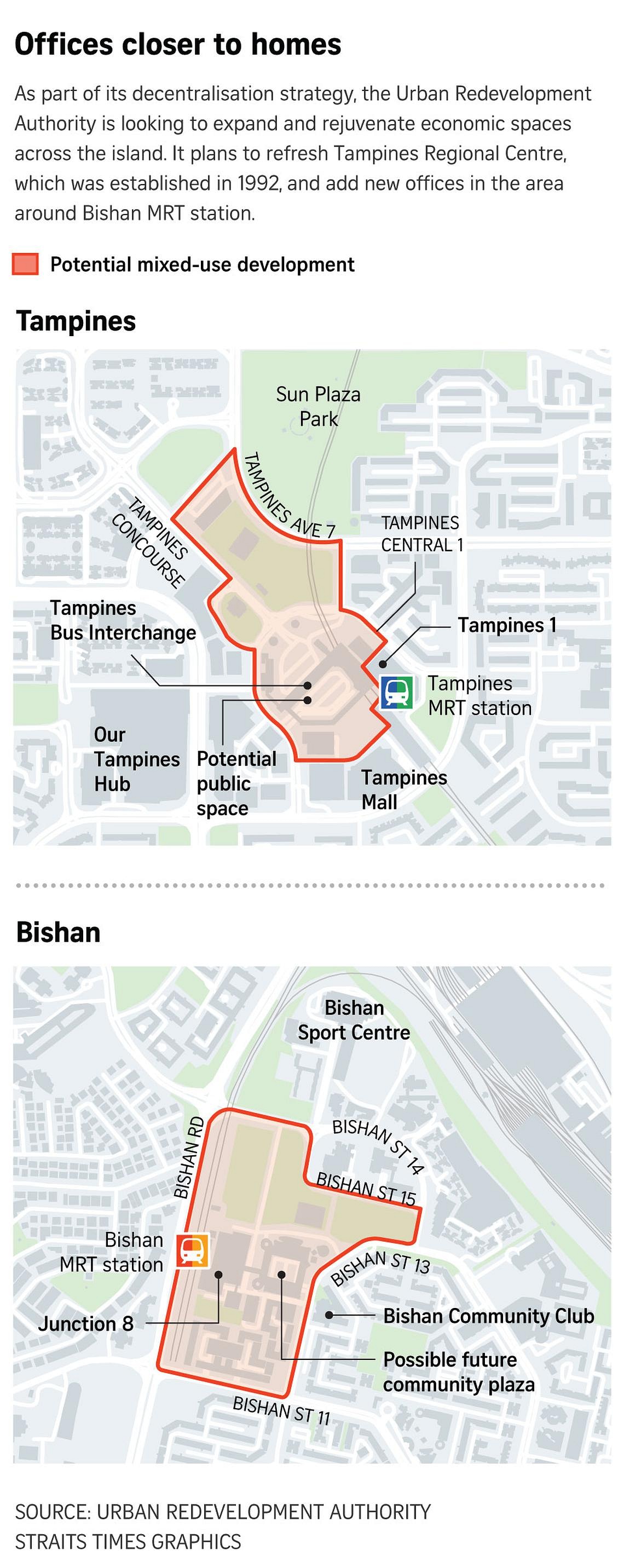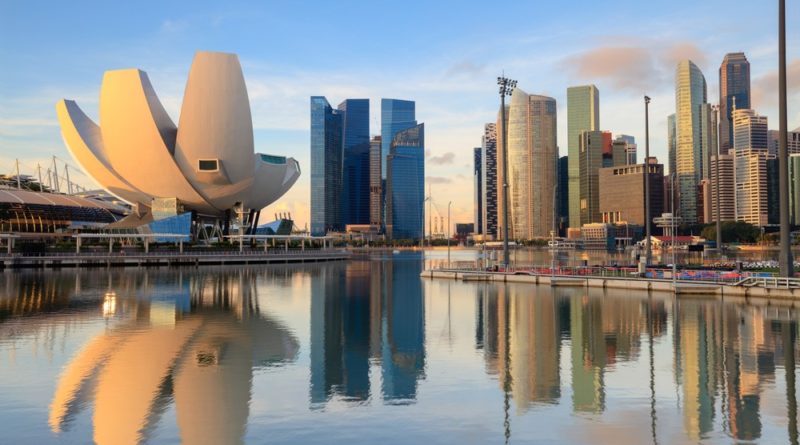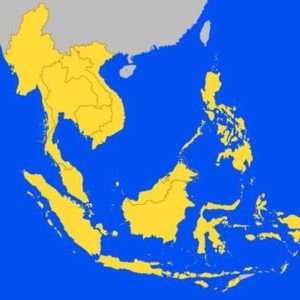ASEANEWS HEADLINE-DEVELOPMENT | SINGAPORE: Town centres in Tampines, Bishan could be redeveloped under new plans by URA
An artist’s impression of what Bishan could look like when mixed-used developments are added to the town centre. PHOTO: URBAN REDEVELOPMENT AUTHORITY
.
.

SINGAPORE – Homes could be built above and around Tampines MRT station, and office towers could spring up near the Bishan transport hub, under newly unveiled plans to redevelop both these town centres.
These plans to rejuvenate developed town hubs were made public by the Urban Redevelopment Authority (URA) on Oct 24, as part of an exhibition showcasing current and future economic hubs in Singapore.
Also in the pipeline could be a new industrial park in Seletar, near Seletar Aerospace Park.
URA said in the exhibition that it is planning to rejuvenate the area around Tampines MRT station, the Tampines Regional Centre, which was established in 1992.
It plans to build new mixed-use developments, which will have homes, commercial spaces and an integrated transport hub, centred on the area now occupied by Tampines Bus Interchange and the MRT station.
There, the authorities plan to add a new public space “to activate the heart of Tampines Regional Centre”, and make bus-rail transfers more convenient.
The redevelopment will also make it easier for people to walk to nearby areas such as Our Tampines Hub, Sun Plaza Park, and the Housing Board neighbourhood centre at Tampines Central 1.
URA said this could be done by building sheltered paths and underground passages.
For Bishan, URA plans to develop new offices and work spaces in the empty plots of land around the Junction 8 mall and Bishan Bus Interchange.
These new office spaces will be integrated with shops, social amenities and transport facilities, said URA, and added that there will be more public spaces and plazas for community use, including one at the current site of Bishan Bus Interchange.
The plan also is for the new developments around Bishan MRT station to be car-lite, with pedestrian-friendly streets and easy access to public transport facilities.
Mr Nicholas Mak, chief research officer at Mogul.sg, said that with the work-from-home culture now ingrained in employees, demand for new office spaces in primarily residential areas like Bishan may not be robust. “It may take a while for the market to absorb any spaces that are rolled out, just as it was with Paya Lebar, when office spaces were built near the MRT station there,” he said.
He noted that many firms – especially larger ones – still prefer being sited in traditional central business districts (CBDs) due to proximity to other companies offering supporting services, and opportunities for their employees to network.
The authorities also intend to build a new industrial park in Seletar East, for “high value-add sector industries such as wafer fabrication”. These are part of efforts to increase the supply of industrial spaces to support high-tech sectors, URA said.
The park will be sited at an area of about 3.4 sq km bounded by Tampines Expressway, Seletar Aerospace Drive and Sungei Punggol, which is currently zoned as a “reserve site”, meaning its specific use has not been determined.
The site includes heritage bungalows associated with the former British Royal Air Force station in Seletar, as well as the Singapore Armed Forces’ Seletar Camp, and vegetated areas such as Seletar Wet Gap and Sungei Punggol Mangroves.
Ads by:

Ads by:
Environmental studies will be conducted to ensure that the industrial park’s development is carried out sensitively, said URA, while industrial developer JTC Corporation said the area will be developed in phases starting in the near to medium term.
The plans are part of a decentralisation strategy that the country has pursued since the early 1990s by creating economic areas beyond the CBD, and moving jobs closer to homes.
Also being studied are plans for an upcoming Changi East Urban District, a 30ha “airport city” to be established next to the airport.
Nearby, the existing Changi Business Park could be rejuvenated, with new spaces for mixed-use developments and aerospace-related firms to tap the area’s proximity to Changi Airport. These plans come as construction of Changi Airport’s Terminal 5 is set to begin in 2025.
URA cited airport cities in Amsterdam, Hong Kong and Istanbul as examples of cities in the world with commercial areas around their airports.
Speaking at the exhibition’s launch, Senior Minister of State for National Development Tan Kiat How said Singapore’s downtown will still remain the country’s core financial hub, and the Government is evolving it into an “attractive multi-purpose destination”.
The URA is reviewing its CBD Incentive and Strategic Development Incentive schemes, which are aimed at rejuvenating central areas, Mr Tan said, and the authorities are also looking for new ways to meet changing business needs, and will look into refining policies such that more mixed-use districts can be created, combining residential and recreational spaces within industrial and commercial developments.
URA’s exhibition at The URA Centre in Maxwell Road runs until Jan 3, 2025. The public can find out more about the upcoming plans and offer feedback at go.gov.sg/GrowthNodes



 Memento Maxima Digital Marketing
Memento Maxima Digital Marketing
 Ads by:
Ads by:







